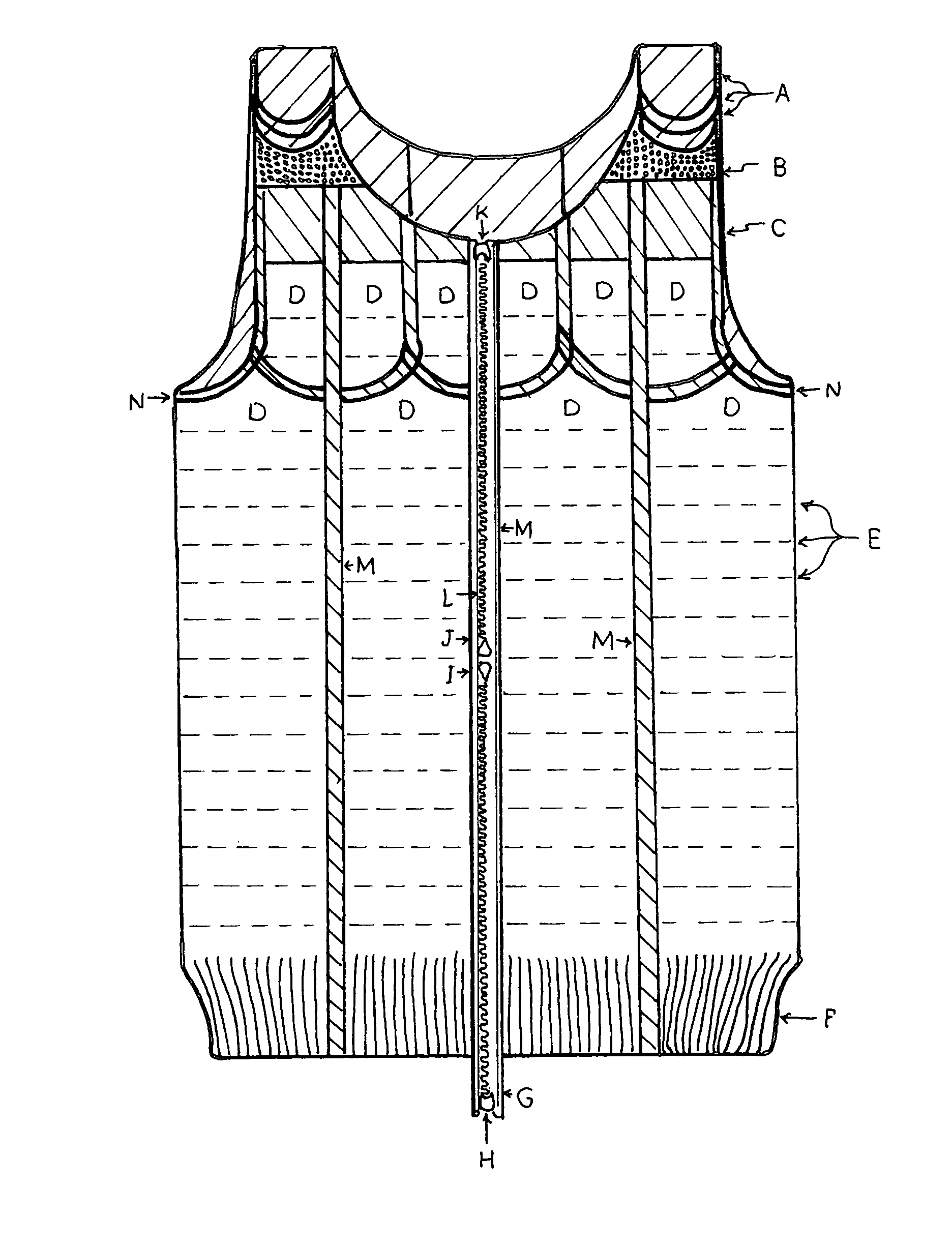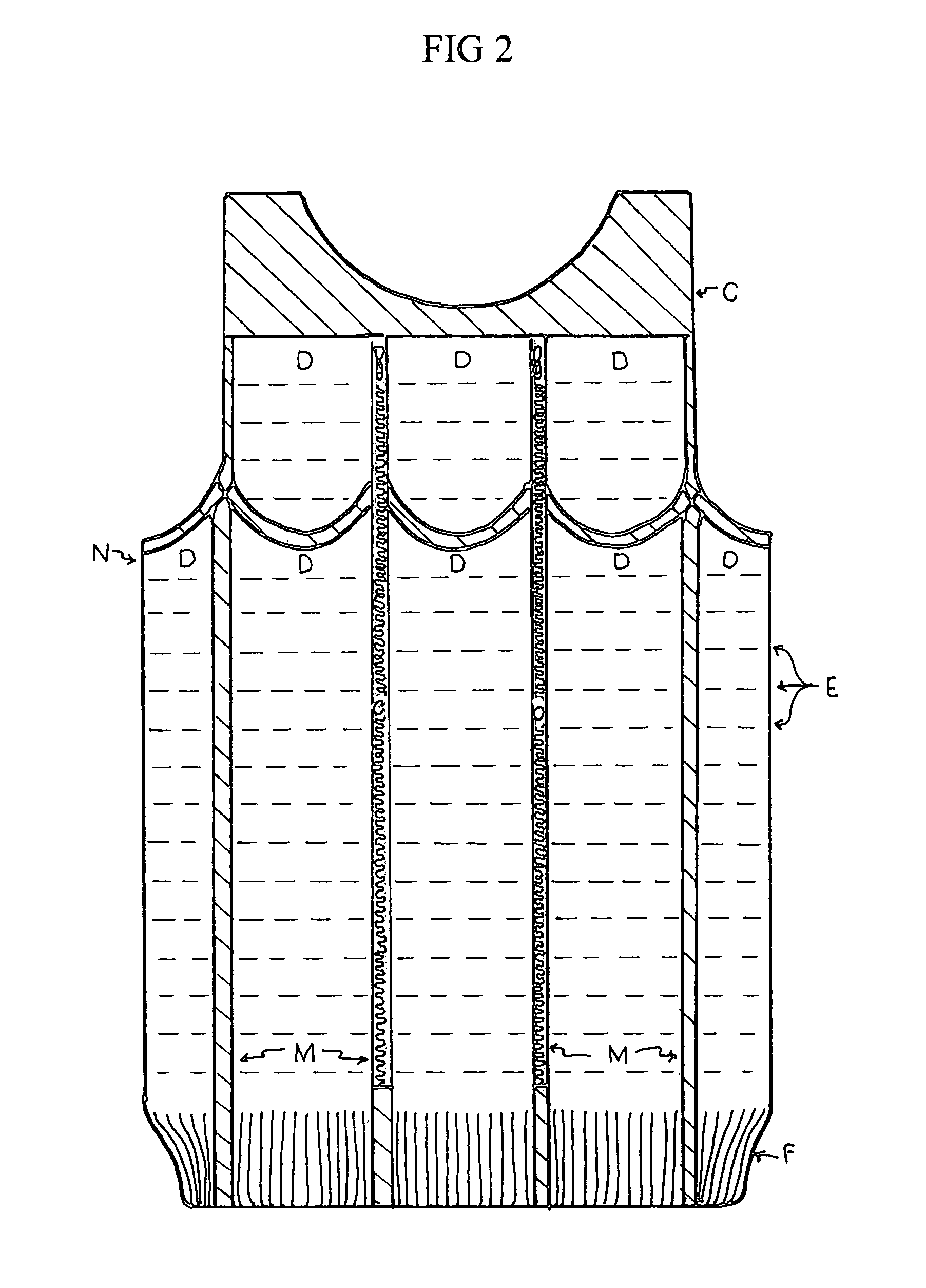Weaving process for production of a full fashioned woven stretch garment with load carriage capability
a full-fashioned woven stretch and weaving technology, applied in the direction of weaving, protective garments, pattern making devices, etc., can solve the problems of not having a high level of control over the set tension of fill yarns, giving any measure of uniformity, and pirns not being able to control a consistent distribution of tensions, etc., to achieve high compressive force, facilitate ease of use, recovery and modulus high
- Summary
- Abstract
- Description
- Claims
- Application Information
AI Technical Summary
Benefits of technology
Problems solved by technology
Method used
Image
Examples
Embodiment Construction
[0036]Referring to the above figure drawings, the full-fashioned weaving process and product of the present invention will be described in detail.
[0037]FIG. 1 illustrates the front view of the full-fashioned stretch woven garment made in accordance with the present invention.[0038]A. The adjustable back shoulder strap lapped over the front shoulder strap[0039]B. The adjustable front shoulder strap with air-entangled elastomeric yarn used as loop device for hook-loop closure[0040]C. Layer 1 & 2 woven together to form yoke in 2:2 plain weave[0041]D Backside of concealed pouches in Layers 1 & 2[0042]E Gathering with plain weave on Layer 2 in pouch area[0043]F. Alternating single layer weave on layer 2 with banded tie down sections on layers 1 & 2 and backed by a modified crepe weave in layer 1[0044]G. Extended zipper tape to facilitate donning the garment from bottom up. The extension reduces the compression forces on the zipper teeth during start up[0045]H. Bottom female slide for 4 w...
PUM
| Property | Measurement | Unit |
|---|---|---|
| width | aaaaa | aaaaa |
| weight | aaaaa | aaaaa |
| weights | aaaaa | aaaaa |
Abstract
Description
Claims
Application Information
 Login to View More
Login to View More - R&D
- Intellectual Property
- Life Sciences
- Materials
- Tech Scout
- Unparalleled Data Quality
- Higher Quality Content
- 60% Fewer Hallucinations
Browse by: Latest US Patents, China's latest patents, Technical Efficacy Thesaurus, Application Domain, Technology Topic, Popular Technical Reports.
© 2025 PatSnap. All rights reserved.Legal|Privacy policy|Modern Slavery Act Transparency Statement|Sitemap|About US| Contact US: help@patsnap.com



